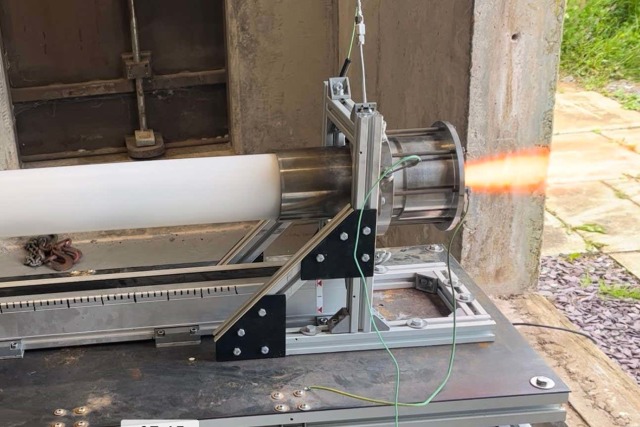When the launch vehicle consumes fuel, its fuel tanks are no longer needed: they turn into dead weight. In addition, by losing the fuel tank, tens of millions of dollars more are lost — the cost of the engines used on the stage. "Self‐devouring rockets" that would burn their tanks as fuel would not only solve the problem of garbage, but would also save customers a lot of money. For the first time, a group of engineers from the UK built a prototype rocket engine that "feeds" on rocket parts.
The fuel tanks of the carrier are the longest part of it, they occupy more than 50 percent of the length of the rocket and without them it is impossible to launch a payload into space. But the mass of the tanks themselves is a "dead weight", it cannot be used for acceleration. Therefore, it reduces the efficiency of the launch vehicle, and also adds the problem of space debris: most often, fuel tanks are disposable and are dumped after fuel is exhausted.
But if the rocket used its already unnecessary parts as fuel, the carrier could deliver even more important cargo into orbit. The "self‐devouring missiles" would require much less fuel, and, consequently, the volume of their tanks would be completely different.
The concept of a carrier that "feeds" on its own parts was first patented in 1938, but its prototype remained on paper. In the middle of the 20th century, such a development was difficult to implement with the help of heavy rockets, which at that time carried out most space launches. However, nowadays, when small light rockets that deliver small satellites into orbit are becoming popular, this idea can be tried to bring to life.
Krzysztof Bzdyk from the University of Glasgow (UK) and his colleagues have created a small prototype of a rocket engine that "devours" its own fuel tank. Although the prototype is not powerful enough to lift a rocket with a load, it still shows well that such a concept works.
The researchers showed the development on January 10 at the scientific forum of the American Institute of Aeronautics and Astronautics (American Institute of Aeronautics and Astronautics SciTech Forum) in Florida. The engine was named "Ouroboros-3" (Ouroborous-3), in honor of one of the oldest symbols — a coiled snake biting its tail.
The prototype is the engine itself, the fuel is oxygen (oxidizer) and propane (fuel), as well as the fuel tank — a consumable plastic pipe inside which fuel is stored, from where it then enters the engine. When the fuel runs out, the engine begins to "feed" the pipe, providing up to one fifth of the total amount of fuel. As a result, there is a thrust of about 100 Newtons — only two to three times more than it takes to break an egg. On average, an effort of 40-52 Newtons is required to crush the shell of chicken eggs.
The team is currently working on creating a larger prototype that can provide about 1,000 Newtons of thrust, which is one-sixth of what is needed to provide them with a suborbital flight (especially a light rocket) and about one-twentieth for flight into orbit.
The researchers stressed that "self-devouring engines" can not only increase the efficiency of space launches, but also help solve the problem of space debris threatening satellites and the ISS. If spent fuel tanks, which are usually discharged into the atmosphere or remain in a burial orbit, are used as fuel, this may be a small but very important step towards solving the problem of space debris.

